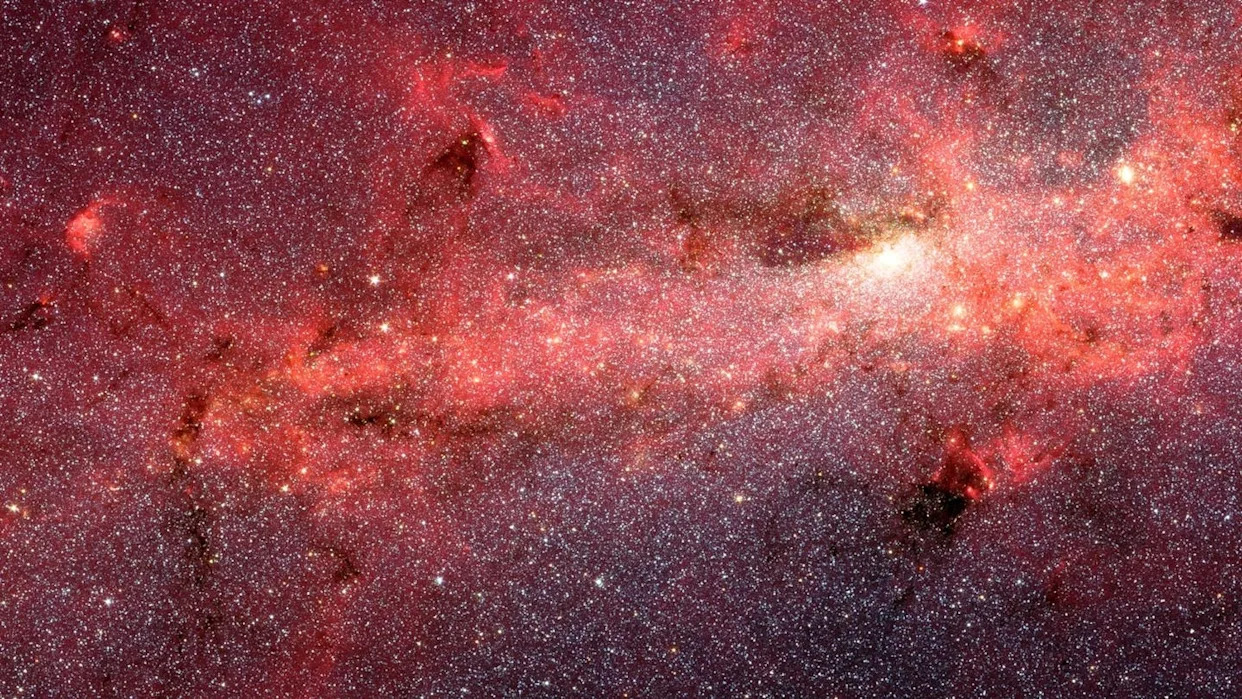Science
Scientists Explore the Concept of an Expanding Universe

The question of whether the universe has a center has intrigued scientists and laypeople alike for over a century. In 1915, Albert Einstein introduced his theory of general relativity, which proposed that the universe was static, unchanging, and immutable. This idea gained acceptance among physicists and mathematicians worldwide. However, observations of distant galaxies began to challenge this notion, indicating that the universe is, in fact, expanding.
As astronomers utilized powerful telescopes to peer into the night sky, they discovered evidence suggesting that galaxies are not stationary. Instead, they are moving away from each other. This dynamic led scientists to realize that Einstein’s theory could accommodate an expanding universe, rather than a static one. Using the principles outlined in general relativity, researchers developed models demonstrating that the universe is constantly evolving.
Understanding the implications of an expanding universe can be daunting. The challenge lies in reconciling this concept with our intuitive perceptions of space. For many, it is difficult to fathom that something as vast as the universe does not have a defined center.
Defining Universal Expansion
To grasp the idea of expansion, it is essential to clarify what it entails. On Earth, “expanding” typically suggests that an object is increasing in size. In the context of the universe, this is partially true. The expansion means that everything is moving farther apart from us. When observing distant galaxies, they appear to be receding from our vantage point. Notably, the farther away a galaxy is, the faster it seems to be moving.
This phenomenon leads to the conclusion that all objects in the universe are getting farther away from one another simultaneously. This notion is critical to understanding cosmic behavior. A common misconception arises when imagining the universe’s creation akin to exploding fireworks. This analogy implies a central point from which galaxies radiate outward, which misrepresents the actual expansion process.
Rather than galaxies themselves moving through space, it is the fabric of the universe that is expanding, carrying galaxies farther apart. An effective analogy involves visualizing dots on a balloon’s surface. As air fills the balloon, the dots move apart without changing their relative positions on the surface. In this analogy, the dots represent galaxies, while the balloon symbolizes the universe’s expanding fabric.
While this analogy serves as a useful starting point, it has limitations. For example, a balloon can fit in one’s hand, while the universe does not have such constraints. Furthermore, the balloon has two distinct parts: its surface and the air inside. These two components are mathematically described differently. The surface is two-dimensional, allowing movement only along its length and width. In contrast, the interior of the balloon is three-dimensional, permitting movement in any direction.
The confusion about the universe’s center arises from our understanding of dimensions. The center of a balloon is located within its interior, but when considering the universe, it resembles the two-dimensional surface of the balloon. Therefore, asking about the universe’s center is akin to inquiring about the center of a balloon’s surface; it simply does not exist.
The Complexity of Space-Time
The struggle to comprehend the universe’s nature is further complicated by the mathematical language used to describe it. Our universe exists in four dimensions, intertwining space and time into a unified concept known as “space-time.” This relationship alters our understanding of movement and dynamics, deviating from our intuitive expectations.
The inquiry into the universe’s center prompts deeper questions about its expansion and the forces driving this phenomenon. Scientists continue to investigate the mechanisms behind this expansion, striving to understand how the universe can grow indefinitely.
Ultimately, the answer to the question of the universe’s center reflects the astonishing and intricate nature of cosmic existence. The realization that everything is expanding everywhere, all at once, offers a glimpse into the profound and beautiful complexities of our universe.
This article was adapted from a piece originally published by The Conversation, an independent news organization dedicated to providing reliable analysis on complex topics. It was written by Rob Coyne, a physics professor at the University of Rhode Island.
-

 Technology5 months ago
Technology5 months agoDiscover the Top 10 Calorie Counting Apps of 2025
-

 Health2 months ago
Health2 months agoBella Hadid Shares Health Update After Treatment for Lyme Disease
-

 Health3 months ago
Health3 months agoErin Bates Shares Recovery Update Following Sepsis Complications
-

 Technology4 months ago
Technology4 months agoDiscover How to Reverse Image Search Using ChatGPT Effortlessly
-

 Technology1 month ago
Technology1 month agoDiscover 2025’s Top GPUs for Exceptional 4K Gaming Performance
-

 Technology2 months ago
Technology2 months agoElectric Moto Influencer Surronster Arrested in Tijuana
-

 Technology5 months ago
Technology5 months agoMeta Initiates $60B AI Data Center Expansion, Starting in Ohio
-

 Technology5 months ago
Technology5 months agoRecovering a Suspended TikTok Account: A Step-by-Step Guide
-

 Health4 months ago
Health4 months agoTested: Rab Firewall Mountain Jacket Survives Harsh Conditions
-

 Lifestyle5 months ago
Lifestyle5 months agoBelton Family Reunites After Daughter Survives Hill Country Floods
-

 Technology4 months ago
Technology4 months agoHarmonic Launches AI Chatbot App to Transform Mathematical Reasoning
-

 Technology3 months ago
Technology3 months agoUncovering the Top Five Most Challenging Motorcycles to Ride




















